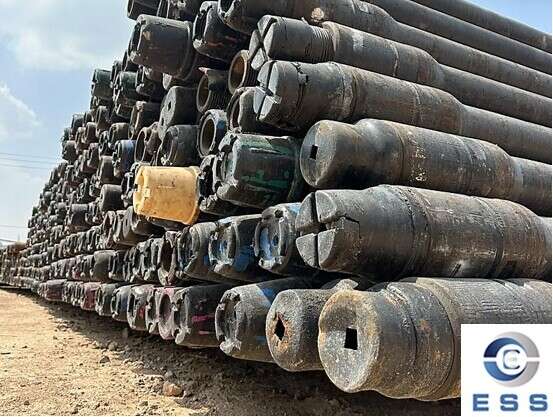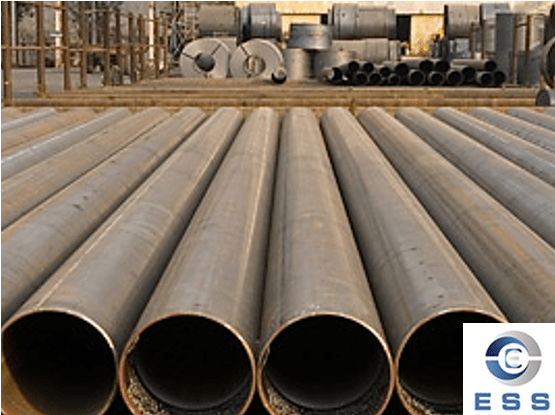
In the fields of oil, gas and water well
drilling, the performance and quality of drill pipe are crucial. The standard systems of different countries and regions provide
specifications for the manufacture and application of drill pipes, among which API 5DP, ISO and DIN are the three most common standards. This article will
compare these three standards in detail to help you better choose the right
drill pipe products.
API 5DP Standard
API 5DP is a drill pipe standard developed
by the American Petroleum Institute (API) and is widely used in the oil and gas
industry. The standard specifies the technical delivery conditions of drill
pipes, including materials, manufacturing processes, dimensions, mechanical
properties and testing requirements. API 5DP is suitable for onshore and
offshore drilling, especially under high pressure and high torque conditions.
The main features are as follows:
1. Material: High-strength alloy steel
pipes such as AISI 4130 or 4140 are usually used.
2. Size range: Outer diameter from 60.32 mm
to 168.28 mm, wall thickness from 6.45 mm to 12.7 mm
3. Length: R1 (18-22 feet), R2 (27-31 feet)
and R3 (38-45 feet).
4. Connection type: Including internal
flush (IF), full hole (FH), API regular (REG) and numerical connection (NC).
5. Steel grade: Covers E75, X95, G105,
S135, etc.
ISO standard
ISO (International Organization for
Standardization) standard is a global standard system for pipes in the oil and
gas industry. ISO standards are designed to ensure interoperability and
compatibility of products in different countries and regions. The main features
are as follows:
1. Material: ISO standards cover a variety
of materials, including carbon
steel pipe and stainless
steel pipe.
2. Dimensions and tolerances: ISO standards
generally have stricter requirements on dimensions and tolerances than API.
3. Testing and certification: ISO standards
provide detailed testing and certification processes to ensure product quality.
DIN standard
DIN (German Industrial Standard) is a
standard system developed by the German Institute for Standardization and is
widely used in Europe. DIN standards ensure that products meet strict
requirements in terms of quality, size and performance. The main features are
as follows:
1. Materials: DIN standards generally cover
carbon steel pipes and stainless steel pipes.
2. Dimensions: DIN standards usually have
dimensions in millimeters.
3. Tolerances and precision: DIN standards
have high requirements for tolerances and precision.
API 5DP vs. ISO vs. DIN: Comparison
1. Scope of application
API 5DP: Mainly applicable to North
American and international oil and gas industries.
ISO: Universally used, especially in
European and Asian markets.
DIN: Applicable to the European market,
especially in Germany and surrounding countries.
2. Materials and performance
API 5DP: Provides a variety of
high-strength alloy steel options for high pressure and high torque
environments.
ISO: Covers a variety of materials and has
strict requirements for performance and testing.
DIN: Has strict requirements for materials
and performance, and is suitable for high-precision applications.
3. Dimensions and tolerances
API 5DP: Wide range of sizes, moderate
tolerance requirements.
ISO: Strict size and tolerance
requirements.
DIN: Dimensions are in millimeters, with
strict tolerances.
4. Testing and Certification
API 5DP: Provides detailed testing and
certification processes.
ISO: Testing and certification processes
are more comprehensive and strict.
DIN: Strict testing and certification
processes ensure product quality.
Summary
When choosing drill pipe, you need to
choose the appropriate standard based on the specific application scenario and market
requirements. API 5DP is a common standard in the oil and gas industry,
suitable for high pressure and high torque environments; ISO standards are
universal, especially in the European and Asian markets; DIN standards are
highly recognized in the European market.
Read more: Size of Drill Pipe or How Many Types of Drill Pipe Threads Are There?













 Eastern Steel Manufacturing Co.,Ltd not only improve product production and sales services, but also provide additional value-added services. As long as you need, we can complete your specific needs together.
Eastern Steel Manufacturing Co.,Ltd not only improve product production and sales services, but also provide additional value-added services. As long as you need, we can complete your specific needs together.










